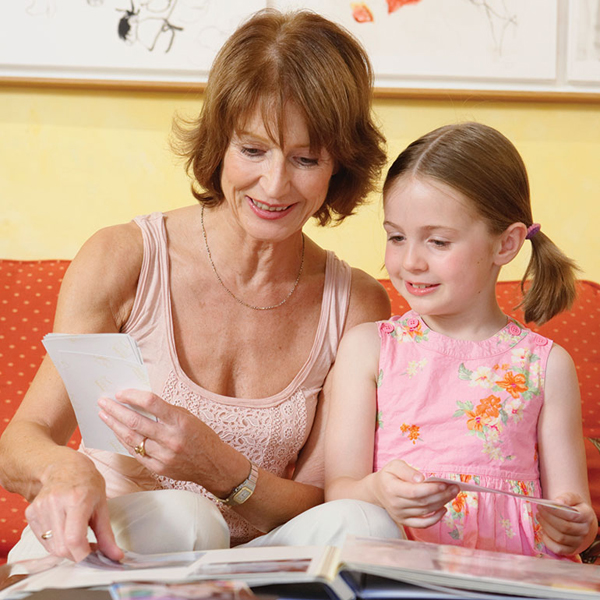Many parents chronicle their child’s story in a scrapbook or adoption lifebook. As a toddler and preschooler, your child probably enjoyed looking at the pictures and hearing you narrate the tale. But by six years old, a child is ready to explore her story at a deeper level, and what she understands and feels about adoption matters more to her than the facts. Creating her own lifebook will help your child express her feelings.
Parent-created lifebooks cannot, by definition, document or articulate a child’s feelings. Lila, age seven, took exception with one of the captions in her lifebook. Looking at the photo of a caregiver handing her to her new mother, Lila said, “I do not look happy, I look scared!” She began to draw some pictures showing how she really felt about her transition from orphanage to home life.
Matt, age seven, has an open adoption. In his lifebook he drew a picture of his mom feeling sad when he kissed his birth mother. This gave his parents a chance to discuss his loyalty conflicts, and to let him know it was fine to have feelings for both of his moms.
Lifebook 101
Your role in the project is to provide the materials and help with the writing, if necessary, but not to make word choices. Here are some other suggestions:
Offer a framework. Children may do better when presented with a workbook-like page (“My Birth Parents” at the top, blank lines for text, space for a drawing) or a question (How did you feel when you were with your foster family?), rather than a blank page.
Encourage exploration. You can make a page that begins: “I was placed for adoption. Let me tell you what I know.” Claire, age six, said her birth mother gave her up because she has asthma; seven-year-old Avery wrote that her birth mom was mean for giving her up. Despite your use of positive language, your child may not have understood everything you said, or may have formed her own conclusions. You can suggest that she draw a picture of what you think your birth mother looks like or ask, “What traits do you think you have in common with your birth parents? With Dad and me?”
Supply the right materials. Provide stickers, scrapbook embellishments, and colorful markers or pencils. Let your child paste in copies of photos, or draw pictures. Use clear, plastic page protectors and a three-ring binder, so that pages can be reordered or edited later.
This project gives you a chance to hear some meaningful or amusing differences between what you think you have told your child about adoption and what he has actually grasped. And it will pave the way for future discussions in the lifelong work of processing his adoption story.



